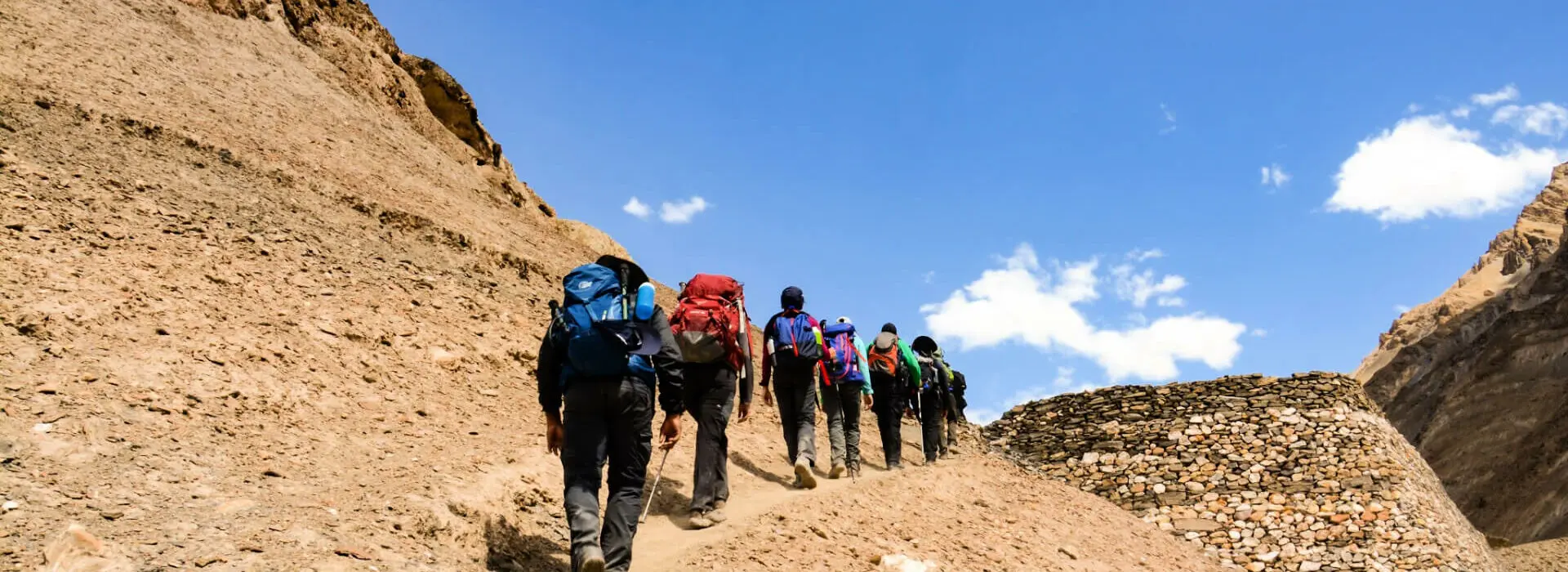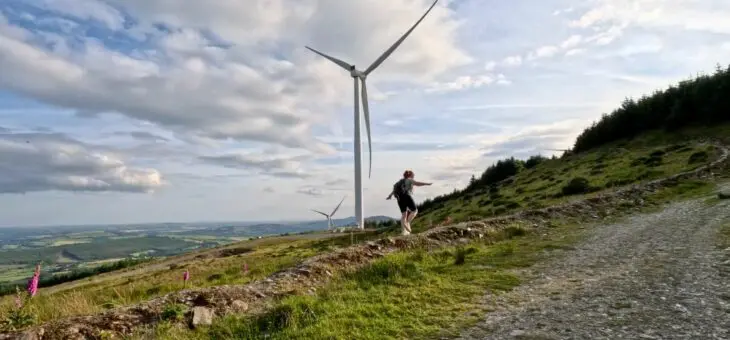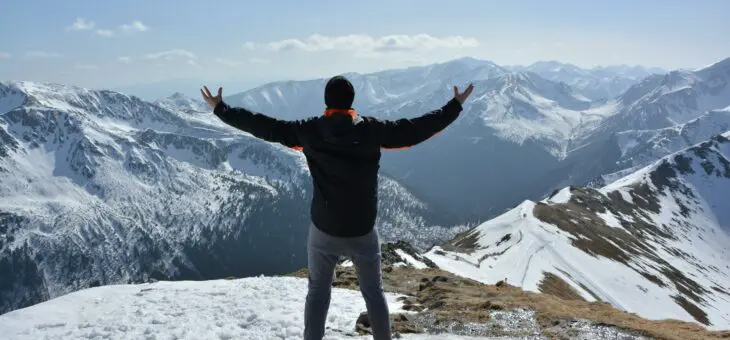Written by Mike Jones, a guide who has led many successful trips with Earth’s Edge.
There are many secrets or tips to successfully reaching a high altitude goal such as standing atop of Africa or trekking through the Himalayas to view the mighty Mount Everest. These include staying hydrated, fuelling your body and getting plenty of rest along the journey. And while all of these are very important factors, I believe what will make your trek be far more enjoyable and comfortable is; the Art of Walking slowly.
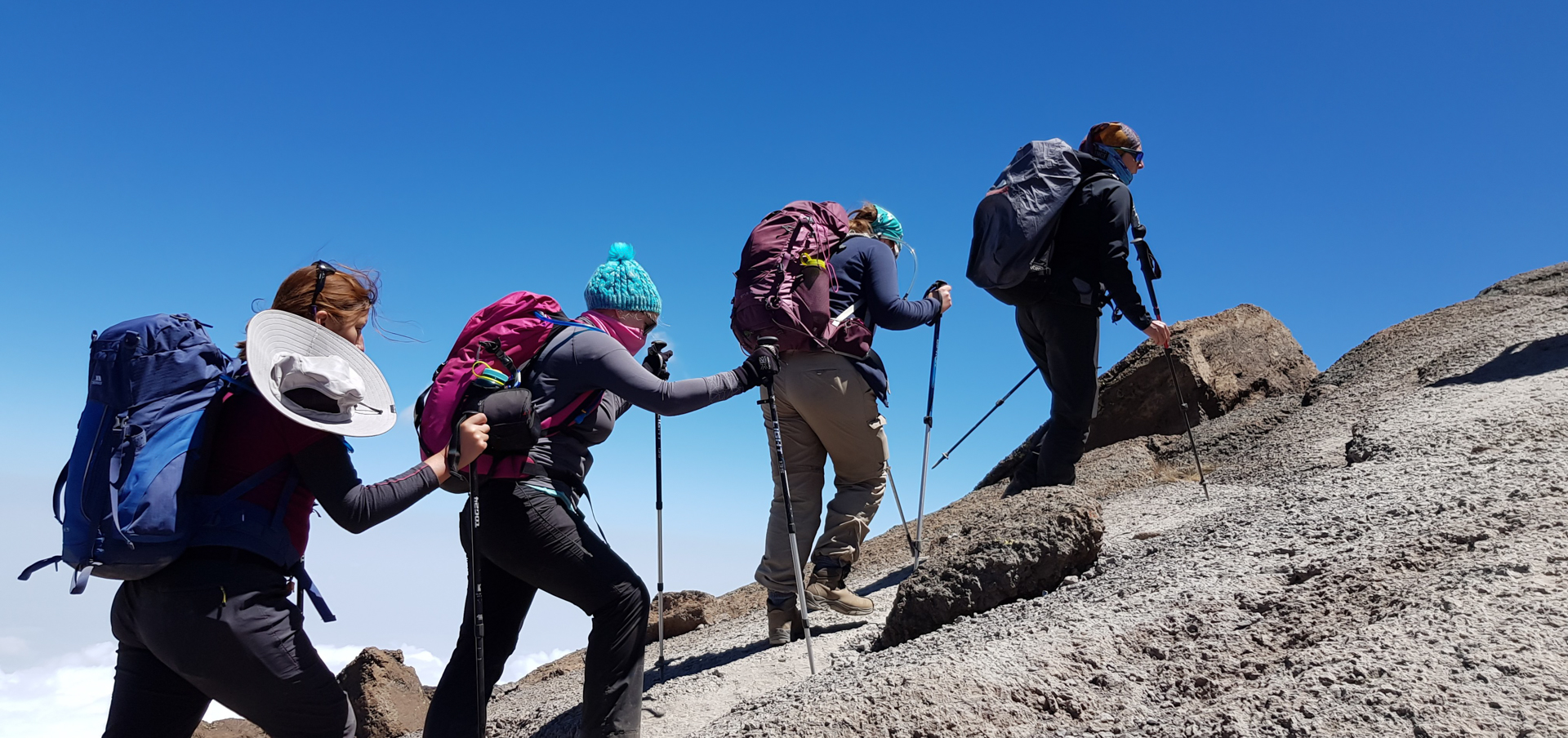
‘Pole Pole’ as they say in Kilimanjaro meaning ‘Slowly Slowly’
Of course, you can walk slowly, right! But how slowly can you really walk and have you ever really thought about going for a walk as slowly as possible? I doubt it!
Ok, let’s get serious for a minute, why on earth is it important to walk slowly, surely if I walk at my normal pace I will get to my goal, and yes you might, but will you enjoy it? or will the altitude catch up with you and knock the wind out of your sails.
Altitude is something which we cannot simulate while hill walking in Ireland and it is also very difficult to describe the effect it has on your body or how it will make you feel. One thing is for certain though if you push too hard at altitude you increase your risk of altitude sickness and once you begin to get symptoms it is difficult to reverse them. So prevention is key and this is where learning to walk slowly becomes a key tool in your acclimatisation, enjoyment and ultimately in reaching your goal.

Practising the art of walking slowly
The specific benefits of walking slowly include being able to walk further without taking a rest, recovering quickly to walk over multiple days, managing body temperature to prevent overheating (which can increase the chance of dehydration) and maintaining a positive mental attitude which can also be a mental distraction when the going gets tough.
So how exactly do you walk slowly? Well, there are 3 things which you can do to slow down your speed while also maintaining a rhythm and forward momentum.
Firstly, you can shorten your stride, aim to place the heel of your moving foot in line with the toe of your planted foot, essentially take baby steps.
Secondly, you can slow your cadence, a fancy way of saying take less steps per minute. A mantra can be helpful for this, in your head repeat any of the following slowly as you lift and place your feet, “Riiiiight – Leeeeft”, “Heel to Toe” or count out “1 -1,000 2 – 1,000”. You can also use “Pole – Pole” which is Swahili for “Slowly – Slowly” and is a common mantra on Kilimanjaro.
Thirdly, you can pause during each step. This is a technique known as Rest Stepping which allows the leg muscles to relax for brief moments limiting fatigue and allowing momentum to continue, especially when walking with a group.
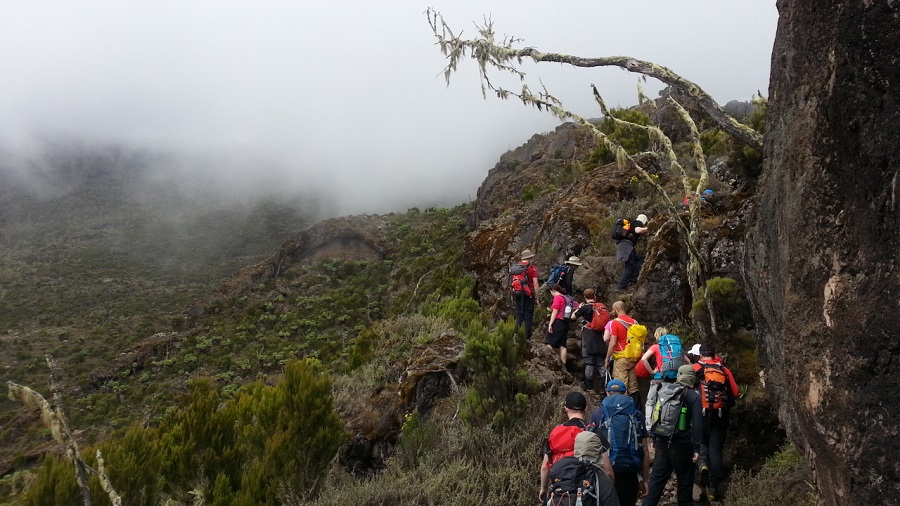
Appreciate the view!
It is worth practising these skills on a training walk while preparing for your trek. A good indication that you are doing it correctly is that even on very steep ground you will not be out of breath, and your body temperature will not rise excessively. If you are out of breath or your heart is racing, slow it down; use your mantra to control the pace.
If you have further questions your Earth’s Edge guide will be able to advise you on your trek or even better why not attend a pre-departure weekend and learn and practice the skills before you depart on your trip of a lifetime!
If you are interested in joining us on any of our treks, contact us today!
